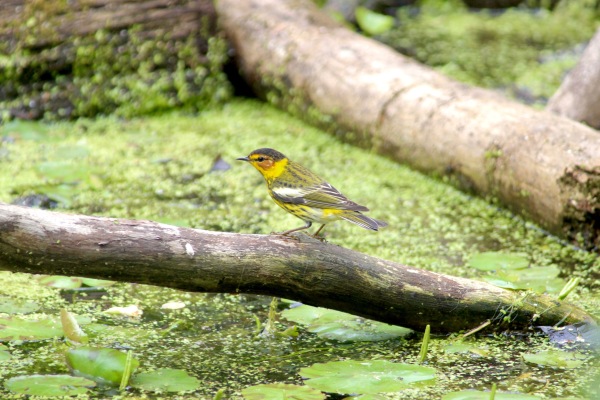Hey guys, welcome back. Today the lesser scaup. A bird that is nearly identical to the greater scaup we did some time back. Lesser scaup are diving ducks found on large ponds and reservoirs. They're found in fresh water more often than greater scaup...usually. As far as telling them apart, it's rather difficult. Their color... Continue Reading →
Pine Siskin
Hey guys, welcome back. Today's bird is a little winter finch; the pine siskin. This plucky little finch is an irruptive species. I know I've talked about irruption before but essentially, it means they can be very plentiful some winters, and completely absent other winters. Most migrations are spurned by food sources. Most birds fly... Continue Reading →
Western Tanager
Hey guys, welcome back! Today's bird is an interesting one as it's a western species, meaning the bird I actually saw was a vagrant. What is a vagrant in animal terms? Well, simply put, it's an animal (in this case a bird) that strays far outside its normal range. The western tanager is typically found... Continue Reading →
Northern Pintail
Hey guys, welcome back! Today we dive (or rather dabble) back into the world of ducks. The northern pintail is one of the most abundant duck species in the world, being found throughout the northern hemisphere from the arctic south to northern South America and north-central Africa. Here in the US, they can be found... Continue Reading →
Red-breasted Nuthatch
Hey guys, welcome back! We got ourselves a nuthatch today! The red-breasted nuthatch is the second of two eastern species of nuthatch (there's more out west which hopefully will be added to my list some day.) They are actually found throughout North America including 49 of the 50 states (sorry Hawaii) and are more common... Continue Reading →
Cape May Warbler
Hey guys, welcome back. Today's bird is the Cape May warbler. This warbler is unique amongst its warbler cousins in a couple ways. First up is its appearance. Breeding birds are an assortment of colors and patterns. They sport a green back, yellow belly covered in thin dark streaks, and their yellow face has an... Continue Reading →
Clay-colored Sparrow
Hey guys, welcome back. Today we venture back to the sparrow family for a sparrow that is a bit tricky to ID, especially if you don't see them that often; the clay-colored sparrow! Their normal range goes right down the center of the country, throughout the Great Plains, while breeding throughout southern Canada. They are... Continue Reading →
Philadelphia Vireo
Hey guys, welcome back. Today is a vireo often overlooked; the Philadelphia vireo. The Philadelphia vireo can be a tricky ID. It looks very similar to the warbling vireo, but with slightly more contrast in the face stripes (though not as much as the red-eyed vireo.) The key feature is its yellow breast. Although sometimes... Continue Reading →
Northern Harrier
Hey guys welcome back. Today is a cool raptor, the norther harrier. Northern harriers kind of look like a cross between an owl and a hawk. They are hawks, in the same family as the Cooper's and Sharp-shinned we've covered in the past. But get a close look at their face and you'll see a... Continue Reading →
Yellow-breasted Chat
Hey guys, welcome back. Today is a strange bird, the yellow-breasted chat. Well, strange in a taxonomic way. The yellow-breasted chat was always a bird without a home; not quite fitting in with any other families. For many years, it was actually in the warbler family despite being much larger, and not really sharing a... Continue Reading →





